
The Enchanted Wilderness of Holly Springs National Forest
Discover the natural beauty and tranquil wilderness of Holly Springs National Forest in Mississippi, perfect for hiking, fishing, camping, and wildlife watching.
Nestled in the rolling hills of North Mississippi, Holly Springs National Forest is a hidden gem for nature lovers and adventure seekers alike. Covering over 155,000 acres, this lush forest offers a diverse landscape of dense woodlands, serene lakes, and winding streams. The forest is a haven for wildlife, with deer, wild turkeys, and a variety of bird species calling it home. For those who love hiking, there are numerous trails that meander through the forest, offering breathtaking views and the chance to experience the tranquility of nature. Whether you're an avid hiker or just looking for a peaceful walk, there's a trail for you. The forest is also a popular spot for fishing, with several lakes and streams teeming with bass, catfish, and other species. Camping is another favorite activity in Holly Springs National Forest. With several well-maintained campgrounds, you can pitch a tent under the stars and enjoy the sounds of nature. For a more rustic experience, there are also primitive camping sites available. In addition to these activities, the forest is a great place for bird watching, horseback riding, and picnicking, making it an ideal destination for a weekend getaway or a longer retreat into nature.
Local tips in Holly Springs National Forest
- Visit in the spring or fall for the best weather and most vibrant scenery.
- Bring insect repellent, as mosquitoes can be prevalent, especially near water.
- Check trail conditions and weather forecasts before heading out.
- Fishing requires a valid Mississippi fishing license.
- Pack out all trash to keep the forest pristine for future visitors.
The Enchanted Wilderness of Holly Springs National Forest
Nestled in the rolling hills of North Mississippi, Holly Springs National Forest is a hidden gem for nature lovers and adventure seekers alike. Covering over 155,000 acres, this lush forest offers a diverse landscape of dense woodlands, serene lakes, and winding streams. The forest is a haven for wildlife, with deer, wild turkeys, and a variety of bird species calling it home. For those who love hiking, there are numerous trails that meander through the forest, offering breathtaking views and the chance to experience the tranquility of nature. Whether you're an avid hiker or just looking for a peaceful walk, there's a trail for you. The forest is also a popular spot for fishing, with several lakes and streams teeming with bass, catfish, and other species. Camping is another favorite activity in Holly Springs National Forest. With several well-maintained campgrounds, you can pitch a tent under the stars and enjoy the sounds of nature. For a more rustic experience, there are also primitive camping sites available. In addition to these activities, the forest is a great place for bird watching, horseback riding, and picnicking, making it an ideal destination for a weekend getaway or a longer retreat into nature.
When is the best time to go to Holly Springs National Forest?
Iconic landmarks you can’t miss
Ida B Wells-Barnett Museum
Discover the inspiring legacy of Ida B. Wells at the Ida B. Wells-Barnett Museum in Holly Springs, Mississippi—an essential stop for civil rights history enthusiasts.

Marshall County Historical Museum
Explore the rich heritage of Holly Springs at the Marshall County Historical Museum, featuring captivating exhibits and local artifacts that tell the story of the past.

Yellow Fever Church Museum
Explore the Yellow Fever Church Museum in Holly Springs, MS, and uncover the historical significance of yellow fever in shaping the local community.

Rust-at-Airliewood
Discover the historical significance and charm of Rust-at-Airliewood in Holly Springs, Mississippi - a must-visit for history enthusiasts and travelers alike.

Walter Place
Explore the grandeur of Walter Place, a historical landmark in Mississippi showcasing exquisite antebellum architecture and lush gardens.
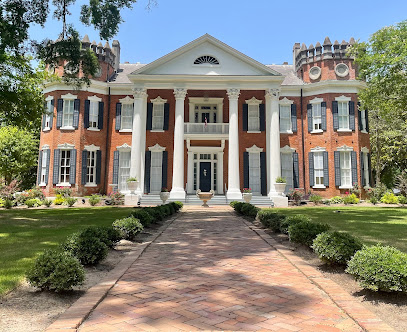
Holly Springs Pilgrimage
Experience the rich history and stunning beauty of the Holly Springs Pilgrimage, an enchanting journey through antebellum homes and gardens.

Unmissable attractions to see
Tupelo Buffalo Park & Zoo
Experience the beauty of nature and wildlife at Tupelo Buffalo Park & Zoo, an engaging destination in Mississippi for families and animal lovers.

Wall Doxey State Park
Discover the natural beauty of Wall Doxey State Park in Mississippi, a serene escape for outdoor enthusiasts and nature lovers alike.
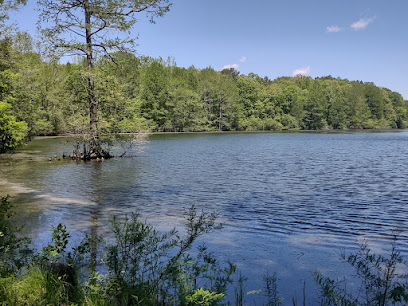
Shiloh National Military Park Corinth Interpretive Center
Discover the rich history of the Civil War at Shiloh National Military Park Corinth Interpretive Center, a must-visit for history enthusiasts.
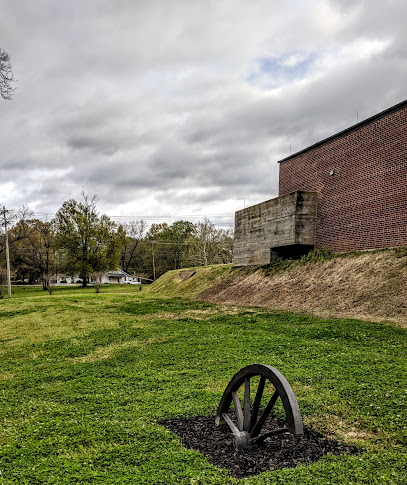
Chewalla Lake Recreation Area
Experience the natural beauty and tranquility of Chewalla Lake Recreation Area, a premier camping destination in Holly Springs, Mississippi.

Strawberry Plains Audubon Center
Explore the beauty of nature and witness diverse bird species at Strawberry Plains Audubon Center in Holly Springs, Mississippi.

Ida B Wells-Barnett Museum
Explore the Ida B. Wells-Barnett Museum, a cultural center in Holly Springs that celebrates the legacy of a civil rights icon and advocates for social justice.

Oren Dunn City Museum
Explore the rich history of Tupelo at the Oren Dunn City Museum, where artifacts and stories come together to celebrate local heritage.
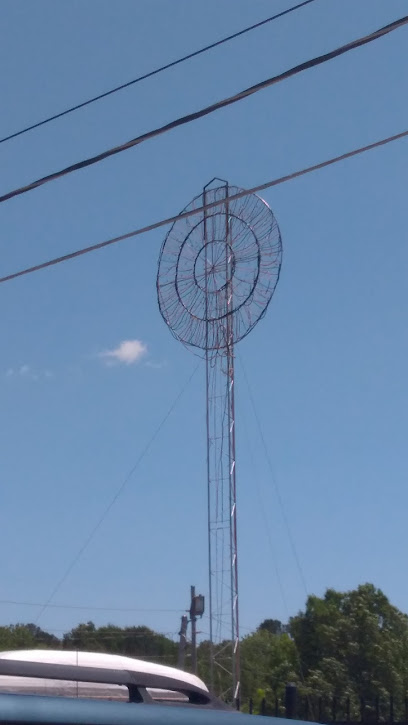
Marshall County Historical Museum
Explore the rich history of Holly Springs at the Marshall County Historical Museum, featuring artifacts and exhibits that showcase the region's heritage.

The Apron Museum
Explore the unique history and cultural significance of aprons at The Apron Museum in Iuka, Mississippi, a charming destination for history lovers.

Curlee House
Discover the rich history and charm of Corinth at Curlee House, a captivating museum showcasing the local heritage and culture.

L.Q.C. Lamar House Museum
Discover the rich history of Mississippi at the L.Q.C. Lamar House Museum, a must-visit for history lovers and travelers seeking cultural experiences.

Mount Holly Plantation
Explore the historical charm of Mount Holly Plantation, a captivating landmark in Mississippi, surrounded by the scenic beauty of Lake Washington.

Rust-at-Airliewood
Explore Rust-at-Airliewood, a historical gem in Holly Springs, Mississippi, where captivating architecture and serene gardens await.

Yellow Fever Church Museum
Explore the Yellow Fever Church Museum in Holly Springs, MS, and uncover the profound history of resilience during the yellow fever epidemics.

Holly Springs Pilgrimage
Explore the enchanting Holly Springs Pilgrimage, showcasing stunning antebellum homes, lush gardens, and southern charm in the heart of Mississippi.

Essential places to dine
Marshall Steakhouse
Experience the ultimate steak dining at Marshall Steakhouse in Holly Springs - where quality meets flavor in every bite.

El Nopalito
Experience authentic Mexican flavors at El Nopalito in Holly Springs - perfect for families and food lovers alike!
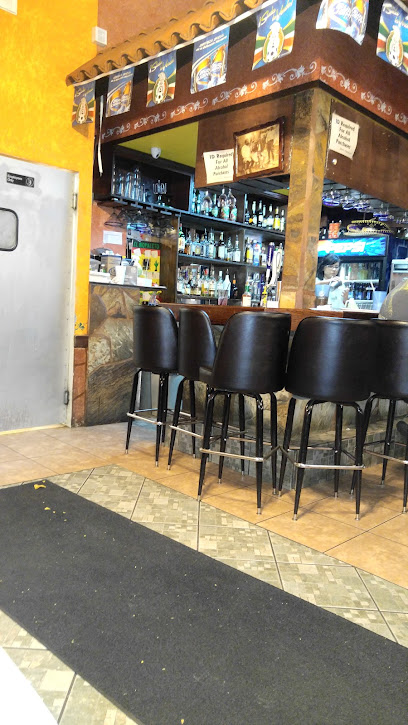
Huddle House
Experience the warmth and flavors of Southern comfort food at Huddle House in Holly Springs – your go-to diner for hearty meals all day long.

Wendy's
Experience delicious fast food at Wendy's in Holly Springs - home of fresh burgers and signature Frosty treats.

Southern Eatery
Experience authentic Southern comfort food at Southern Eatery, a family-friendly buffet restaurant in Holly Springs, Mississippi.

Burger King
Experience delicious flame-grilled burgers and quick bites at Burger King in Holly Springs – perfect for travelers on-the-go!

Annie’s Home Cooking
Discover authentic Southern cuisine at Annie's Home Cooking in Holly Springs - where every meal feels like home.

Laws Hill Fish House
Discover authentic Southern seafood at Laws Hill Fish House in Holly Springs – where every meal is a celebration of flavor.

The Chicken Coop
Discover The Chicken Coop: A fast food haven for chicken wing lovers in Holly Springs, MS with an array of flavors and a welcoming atmosphere.

Copper Kettle
Discover Southern hospitality and delicious comfort food at Copper Kettle in Holly Springs.

Smokey Corner
Experience authentic Southern barbecue at Smokey Corner in Holly Springs – where smoky flavors meet warm hospitality.

Markets, malls and hidden boutiques
Walmart Supercenter
Discover the all-in-one shopping experience at Walmart Supercenter in Holly Springs, where convenience meets affordability for every traveler.

Cash Saver
Discover local flavors at Cash Saver, a grocery store in Holly Springs offering fresh produce and local goods.

Dirt Cheap
Explore Dirt Cheap in Blue Mountain, MS, for unbeatable discounts on a wide variety of products, making shopping an adventure for every tourist.

O'Reilly Auto Parts
Discover quality auto parts and exceptional service at O'Reilly Auto Parts in Holly Springs, Mississippi, your trusted auto supply destination.

Phillips Grocery
Experience the authentic flavors of Mississippi at Phillips Grocery, a beloved grocery store and eatery in Holly Springs.

Dollar Tree
Uncover budget-friendly gems at Dollar Tree in Holly Springs, your one-stop shop for groceries, crafts, and more—all for just $1.25!

Holly Springs Shopping Center
Explore a vibrant shopping experience at Holly Springs Shopping Center, where local charm meets diverse retail and dining options.

Crossroads Vendor Market
Explore Crossroads Vendor Market in Olive Branch for unique antiques, boutique finds, and local artisan crafts, perfect for all your gift-giving needs.
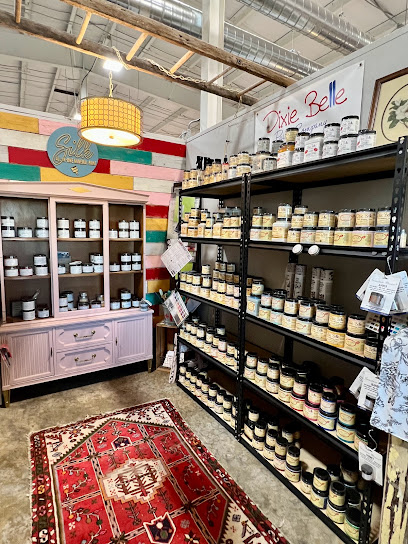
Circle K
Explore Holly Springs with ease at Circle K, your reliable convenience store offering gas, snacks, and more for all travelers.

AT&T Store
Stay connected while exploring Holly Springs, MS, at the AT&T Store, your destination for cell phones and telecommunications services.

Short Stop Grocery
Explore Southern flavors at Short Stop Grocery - a local treasure in Holly Springs, Mississippi, featuring delicious fried chicken and local products.

Holly Market
Explore the flavors of the South at Holly Market, a charming grocery store in Holly Springs, MS, featuring local produce and artisanal goods.

VILLAGE MART Clothing and Footwear
Explore diverse fashion styles and shop for the whole family at VILLAGE MART Clothing and Footwear in Holly Springs, MS – a local favorite for quality attire.

Southern Traditions
Explore Southern Traditions in New Albany, MS – your destination for unique gifts and local crafts that embody the spirit of the South.

Christine's Fashion & Music
Discover unique collectibles and a rich musical legacy at Christine's Fashion & Music in Holly Springs, perfect for tourists and locals alike.

Essential bars & hidden hideouts
Mugshots Grill and Bar - Oxford, MS
Experience the vibrant atmosphere and delicious American cuisine at Mugshots Grill and Bar in Oxford, MS - a family-friendly dining destination.

Chili's Grill & Bar
Discover the flavors of America and Tex-Mex at Chili's Grill & Bar in Oxford, Mississippi, perfect for families and friends alike.

The Blind Pig Pub
Experience the heart of Oxford at The Blind Pig Pub, where local flavors and a lively atmosphere create unforgettable moments.

The Crossing Bar & Grill
Experience delicious food and vibrant entertainment at The Crossing Bar & Grill, Olive Branch's favorite grill and karaoke bar.

Mississippi Ale House
Discover the lively Mississippi Ale House in Olive Branch, where craft beers and Southern cuisine come together in a vibrant atmosphere.

Walk-On's Sports Bistreaux - Oxford Restaurant
Enjoy great food, lively atmosphere, and sports excitement at Walk-On's Sports Bistreaux in the heart of Oxford, Mississippi.

Annie’s Home Cooking
Experience the heart of Southern cuisine at Annie’s Home Cooking, where every dish is a nostalgic celebration of flavor and tradition.

Bucks Bar
Discover Bucks Bar in Corinth, MS - where delicious grilled flavors meet a warm and inviting atmosphere for every foodie.

Booth's Barbeque
Experience the best of Southern barbecue at Booth's Barbeque in Oxford, MS, with a vibrant atmosphere and mouthwatering dishes perfect for every palate.

J R's Bar & Grill
Discover the vibrant atmosphere and delicious menu at J R's Bar & Grill in Olive Branch, MS—a local favorite for food and drinks.

The Oxford Growler
Experience the lively atmosphere and delectable offerings at The Oxford Growler, a must-visit pub and bar in Oxford, Mississippi.

Mike's Bar and Grill
Discover southern charm at Mike's Bar and Grill in Tupelo, Mississippi, where hearty dishes and a friendly atmosphere await every visitor.

Library
Discover Oxford's vibrant bar scene, where craft drinks meet a lively atmosphere, perfect for socializing and unwinding.

Rooster's Blues House
Experience the vibrant blend of Southern cuisine and live blues music at Rooster's Blues House in Oxford, Mississippi.

Funkys Pizza & Daiquiri Bar
Experience the best pizza and refreshing daiquiris at Funkys Pizza & Daiquiri Bar in Oxford, MS, where fun meets flavor in a vibrant setting.

Local Phrases about Holly Springs National Forest
-
- HelloHowdy
[hah-dee] - GoodbyeSee ya later
[see yuh lay-tur] - YesYep
[yep] - NoNah
[nah] - Please/You're welcomePlease/No problem
[pleez/no prob-lum] - Thank youThank ya
[thank yuh] - Excuse me/SorryPardon me/My bad
[par-dun me/my bad] - How are you?How y'all doin'?
[how y'all doin'] - Fine. And you?Fine. And you?
[fine. and yuh?] - Do you speak English?Ya speak English?
[ya speak ing-glish?] - I don't understandI don't reckon
[I don't reckon]
- HelloHowdy
-
- I'd like to see the menu, pleaseI'd like to see what y'all got to eat, please
[I'd like to see what y'all got tuh eat, please] - I don't eat meatI don't eat no meat
[I don't eat no meat] - Cheers!Cheers!
[Cheers!] - I would like to pay, pleaseI reckon I'll pay now, please
[I reckon I'll pay now, please]
- I'd like to see the menu, pleaseI'd like to see what y'all got to eat, please
-
- Help!Help!
[Help!] - Go away!Git!
[Git!] - Call the Police!Call the Sheriff!
[Call the Sheriff!] - Call a doctor!Call a doc!
[Call a doc!] - I'm lostI'm plumb lost
[I'm plumb lost] - I'm illI'm feelin' poorly
[I'm feelin' poorly]
- Help!Help!
-
- I'd like to buy...I reckon I'll buy...
[I reckon I'll buy...] - I'm just lookingI'm just lookin'
[I'm just lookin'] - How much is it?How much does it run?
[How much does it run?] - That's too expensiveThat's too steep
[That's too steep] - Can you lower the price?Can ya do any better on the price?
[Can ya do any better on the price?]
- I'd like to buy...I reckon I'll buy...
-
- What time is it?What's the time o' day?
[What's the time o' day?] - It's one o'clockIt's one o'clock
[It's one o'clock] - Half past (10)Half past ten
[Half past ten] - MorningMornin'
[Mornin'] - AfternoonAfternoon
[Afternoon] - EveningEvenin'
[Evenin'] - YesterdayYest'day
[Yest'day] - TodayToday
[Today] - TomorrowTomorrer
[Tomorrer] - 1One
[Wun] - 2Two
[Too] - 3Three
[Three] - 4Four
[Four] - 5Five
[Five] - 6Six
[Six] - 7Seven
[Seven] - 8Eight
[Eight] - 9Nine
[Nine] - 10Ten
[Ten]
- What time is it?What's the time o' day?
-
- Where's a/the...?Where's a/the...?
[Where's a/the...?] - What's the address?What's the address?
[What's the address?] - Can you show me (on the map)?Can ya show me (on the map)?
[Can ya show me (on the map)?] - When's the next (bus)?When's the next (bus)?
[When's the next (bus)?] - A ticket (to ....)A ticket (to ....)
[A ticket (to ....)]
- Where's a/the...?Where's a/the...?
History of Holly Springs National Forest
-
Holly Springs National Forest was established on June 15, 1936, as part of a series of conservation efforts spearheaded by the United States Forest Service. The forest was created to reforest and restore land that had been overused by agricultural activities. This initiative was part of the larger New Deal programs launched during the Great Depression to provide jobs and rejuvenate the environment.
-
Before European settlers arrived, the land that is now Holly Springs National Forest was inhabited by Native American tribes, primarily the Chickasaw Nation. These indigenous peoples lived off the land, utilizing its rich resources for hunting, fishing, and agriculture. Artifacts and burial mounds found within the forest's boundaries are a testament to their long-standing presence and cultural significance.
-
During the American Civil War, the region around Holly Springs played a strategic role. The town of Holly Springs, located near the forest, was the site of a significant Union supply depot. In December 1862, Confederate General Earl Van Dorn led a raid on the depot, destroying valuable supplies and disrupting Union General Ulysses S. Grant’s plans for the Vicksburg Campaign. The surrounding forests offered cover and strategic advantages for both Union and Confederate troops.
-
In the late 19th and early 20th centuries, the timber industry flourished in the region. Large tracts of forest were cleared for timber, which led to significant deforestation and soil erosion. This overexploitation of natural resources was one of the primary reasons for the establishment of Holly Springs National Forest, to help restore and manage the land sustainably.
-
One of the most impactful programs in the early years of Holly Springs National Forest was the work carried out by the Civilian Conservation Corps (CCC). Established as part of the New Deal, the CCC was instrumental in planting trees, building trails, and constructing recreational facilities. Their efforts laid the foundation for the forest's modern infrastructure and helped to stabilize the ecosystem.
-
Today, Holly Springs National Forest is a testament to successful conservation and biodiversity efforts. The forest is home to a wide variety of flora and fauna, including several endangered species. Ongoing conservation programs aim to protect these species and their habitats while promoting sustainable use of the forest’s resources for recreation and education.
Holly Springs National Forest Essentials
-
Holly Springs National Forest is located in northern Mississippi, approximately 45 miles southeast of Memphis, Tennessee. The nearest major airport is Memphis International Airport (MEM), which is well-connected to various domestic and international destinations. From Memphis, you can rent a car or take a taxi to reach Holly Springs, which is about an hour's drive. Alternatively, the area can be accessed via Interstate 22 (I-22) if you're driving from other parts of Mississippi or neighboring states.
-
The most convenient way to explore Holly Springs National Forest is by car. Car rentals are available at Memphis International Airport and in nearby towns. Within the forest, roads are well-maintained and parking is generally available at major trailheads and recreational areas. There is no public transportation directly within the forest, so having a vehicle is essential for getting around. For those interested in cycling, there are also several bike-friendly paths and trails.
-
The official currency is the United States Dollar (USD). Credit and debit cards are widely accepted at most gas stations, restaurants, and shops in the surrounding areas. ATMs are available in nearby towns such as Holly Springs and Oxford, so it's advisable to withdraw cash before entering the forest if you plan to make purchases at smaller, cash-only establishments.
-
Holly Springs National Forest is generally considered a safe destination for tourists. However, standard safety precautions should be taken. Avoid isolated areas after dark and secure your belongings, especially in parking areas. While the forest itself is safe, the nearby city of Memphis has neighborhoods with higher crime rates, so exercise caution if you plan to visit urban areas. Always be aware of your surroundings and follow park regulations to ensure a safe visit.
-
In case of an emergency, dial 911 for immediate assistance. There are several medical facilities and hospitals in nearby towns such as Holly Springs and Oxford. It's recommended to have travel insurance that covers medical emergencies. For minor injuries or health issues, there are pharmacies in the surrounding towns where you can purchase over-the-counter medications. Always inform someone of your travel plans and expected return time when venturing into remote areas of the forest.
-
Fashion: Do wear comfortable, weather-appropriate clothing and sturdy footwear for hiking and exploring the forest. Avoid wearing overly revealing clothing. Religion: Do respect local customs and traditions if visiting nearby towns with religious sites. Public Transport: Do note that public transport is not available within the forest. Renting a car is recommended. Greetings: Do greet people politely with a handshake or a friendly nod. Eating & Drinking: Do try local Southern cuisine in nearby towns. Don’t litter; always pack out what you pack in to preserve the natural beauty of the forest.
-
To experience Holly Springs National Forest like a local, consider visiting during off-peak seasons to avoid crowds and fully immerse yourself in the tranquility of nature. Engage with local rangers who can offer insightful information and tips about the best trails and hidden gems. Don’t miss exploring the Chewalla Lake Recreation Area, which is popular among locals for picnicking and fishing. If you enjoy birdwatching, the forest is home to a variety of bird species, so bring along a pair of binoculars for a unique experience.
Nearby Cities to Holly Springs National Forest
-
Things To Do in Germantown
-
Things To Do in Memphis
-
Things To Do in Grenada
-
Things To Do in Clarksdale
-
Things To Do in Starkville
-
Things To Do in Greenwood
-
Things To Do in Jonesboro
-
Things To Do in Columbia
-
Things To Do in Cullman
-
Things To Do in Tuscaloosa
-
Things To Do in Huntsville
-
Things To Do in Franklin
-
Things To Do in Poplar Bluff
-
Things To Do in Clarksville
-
Things To Do in Paducah







